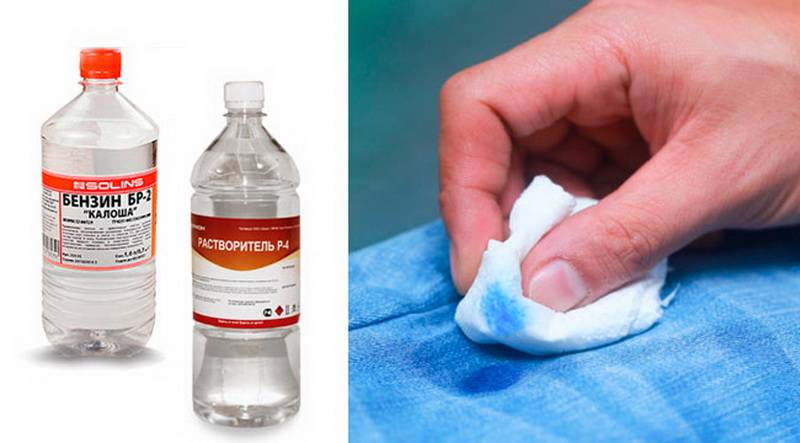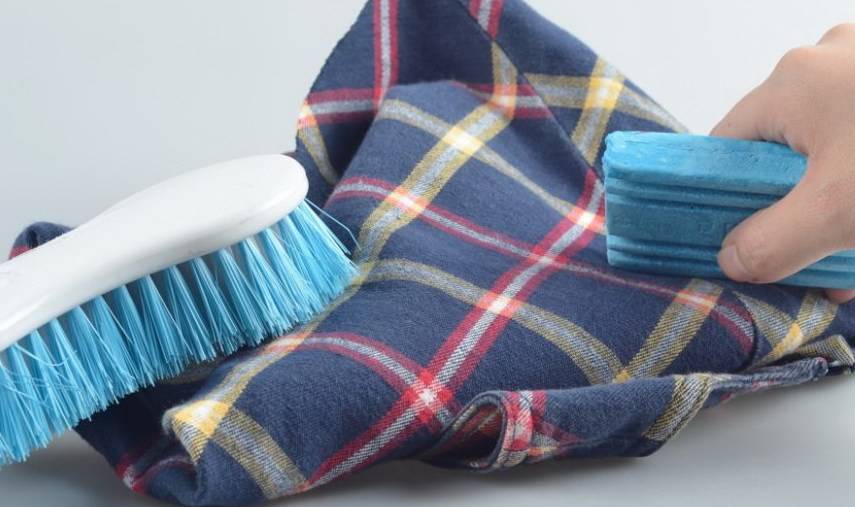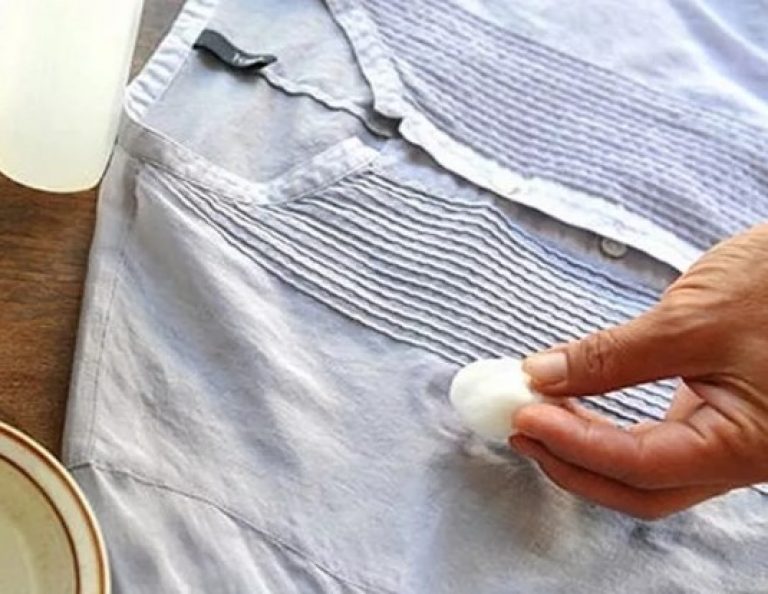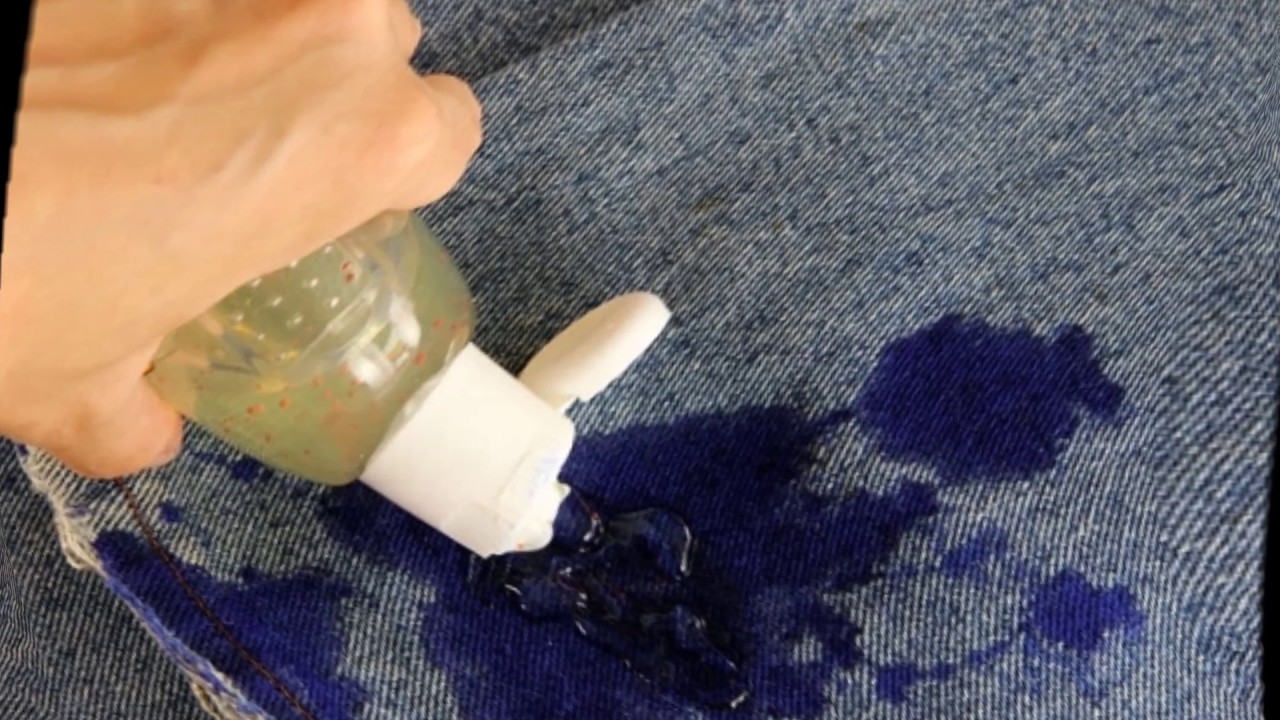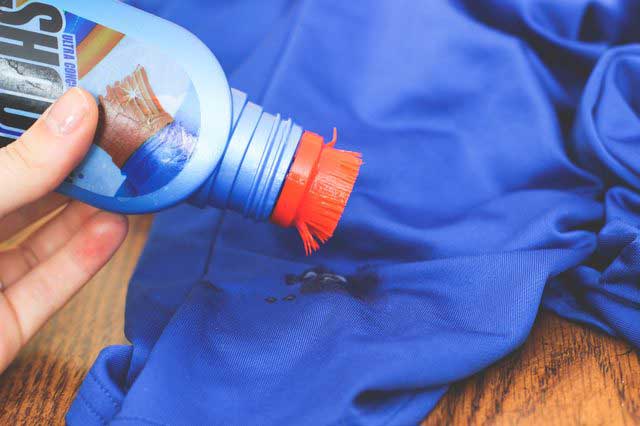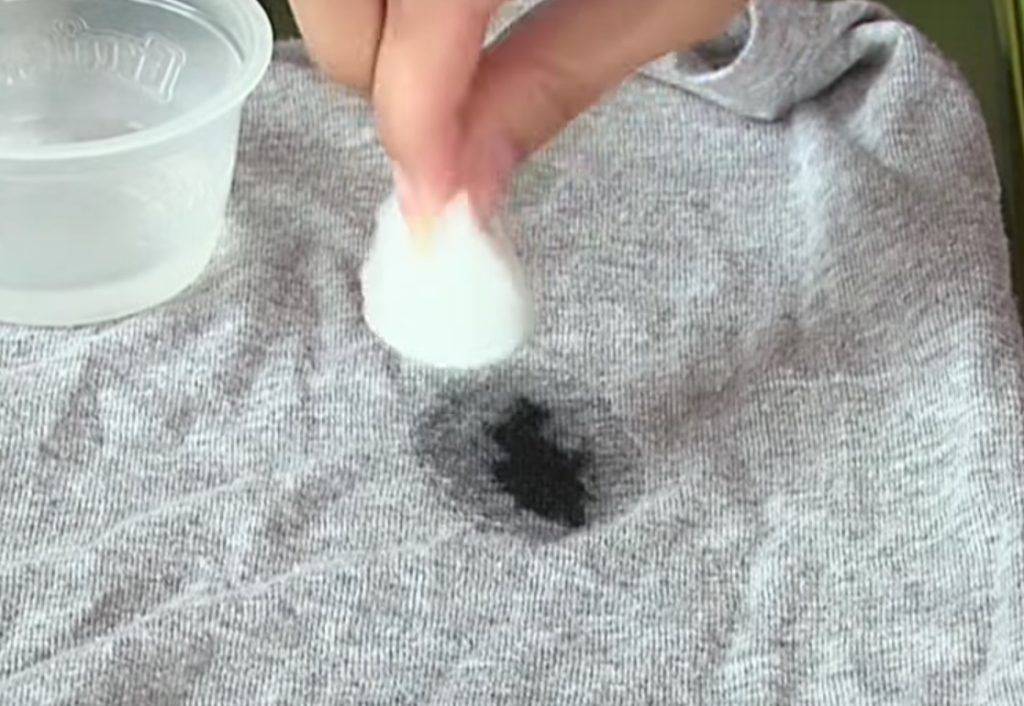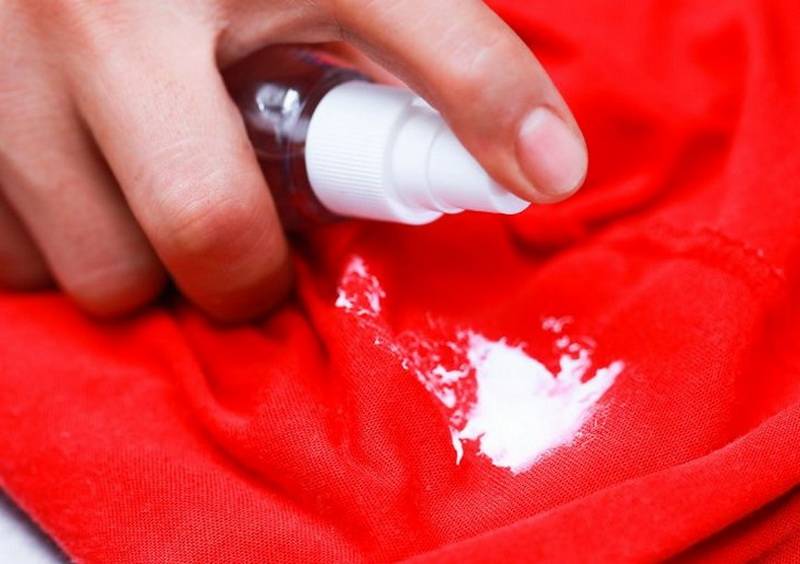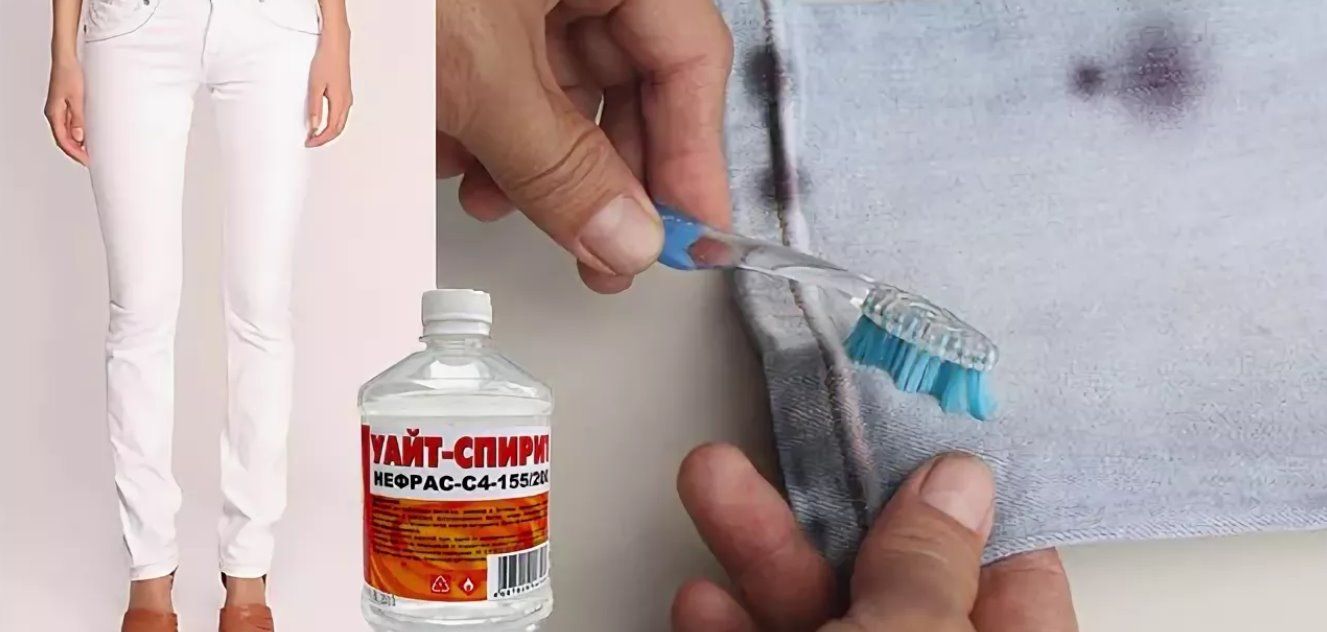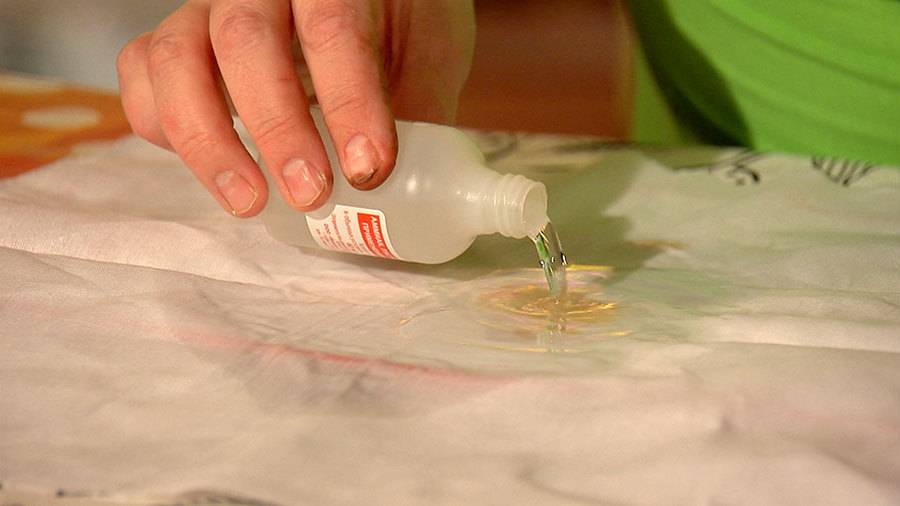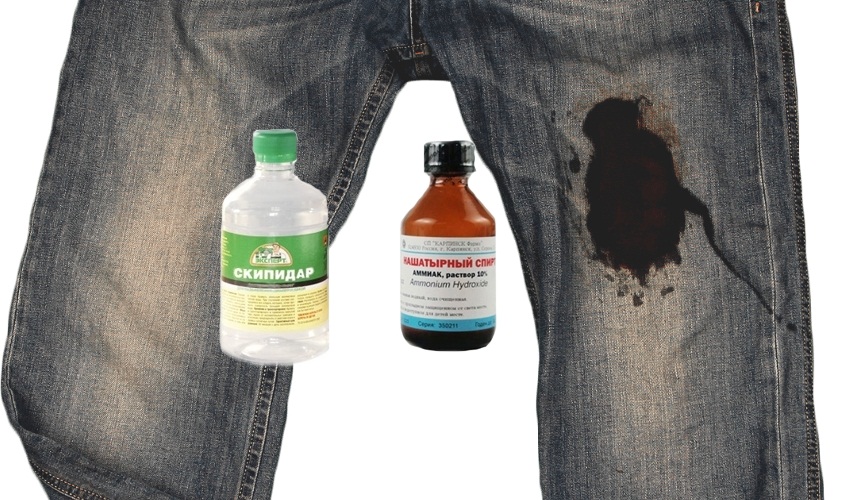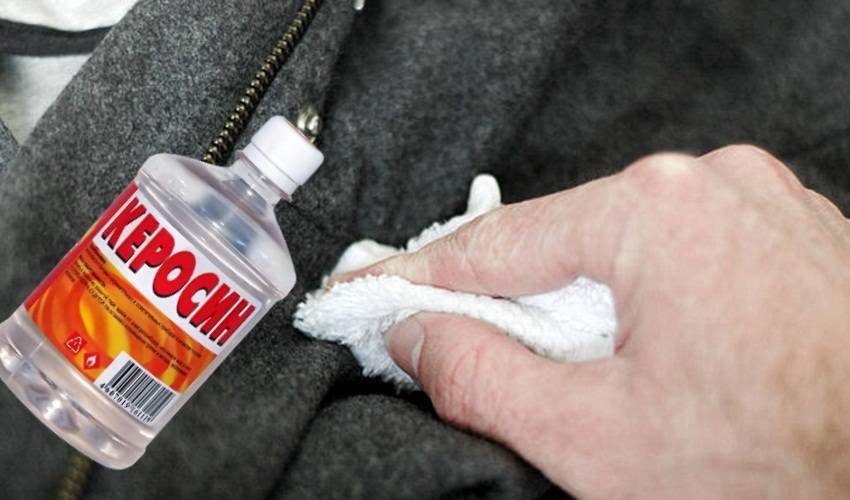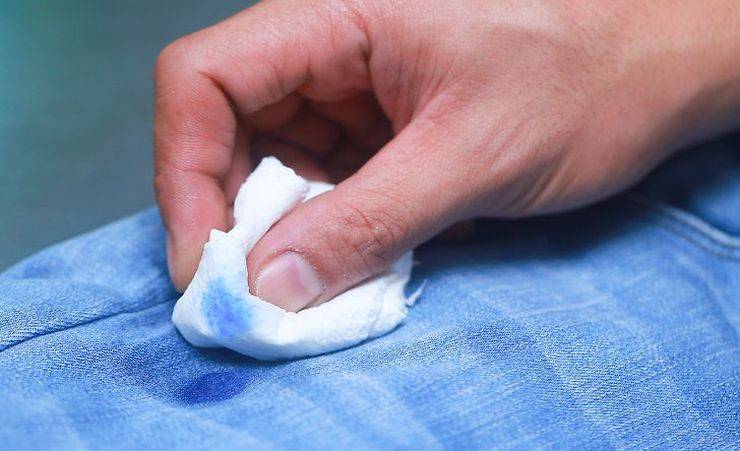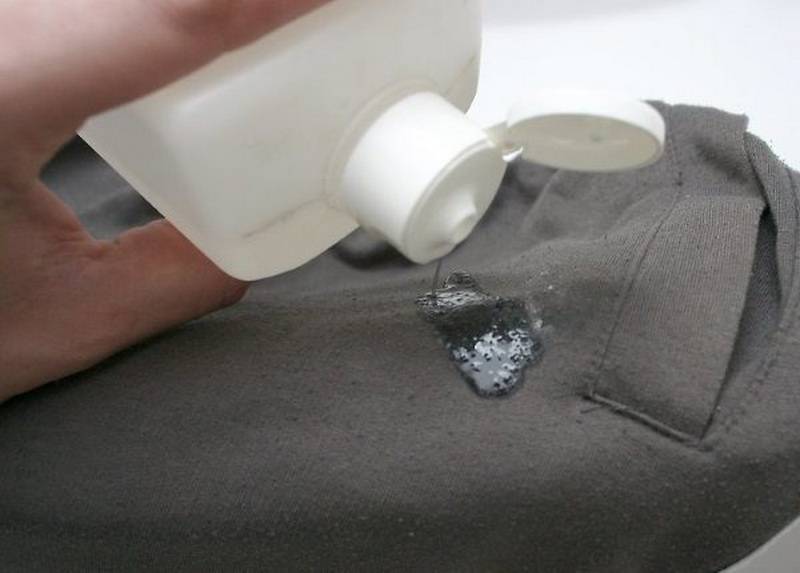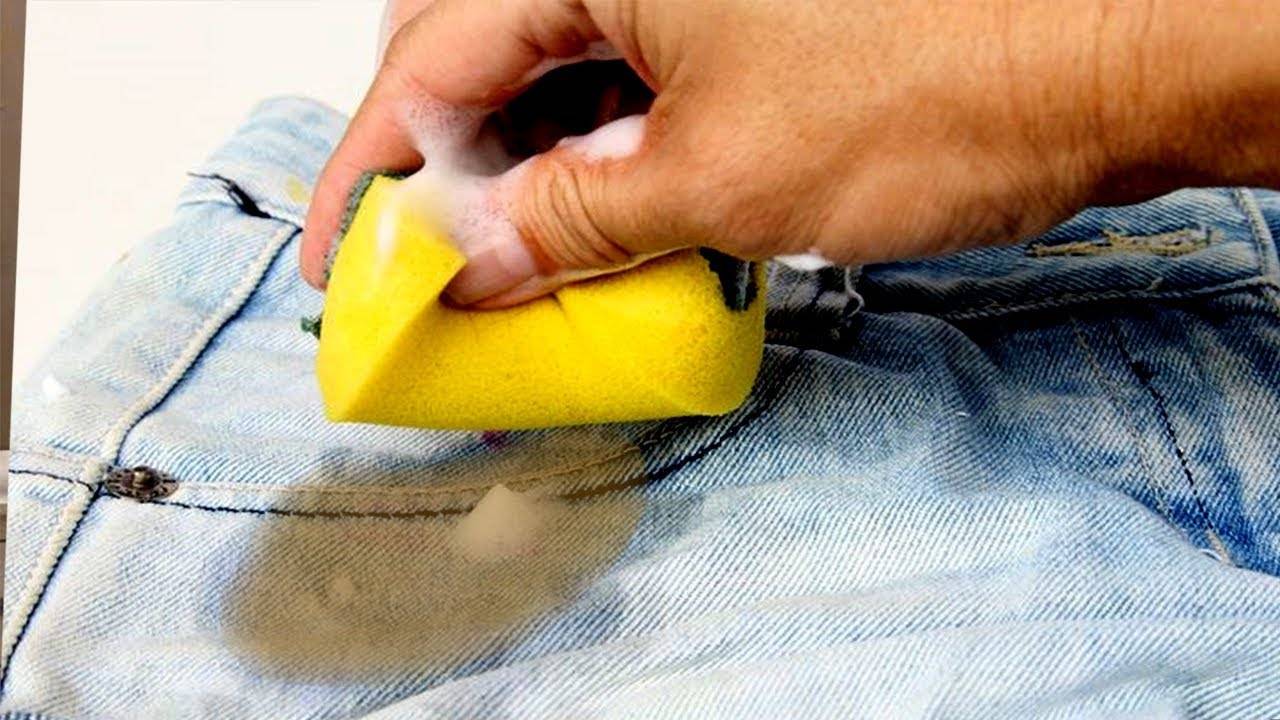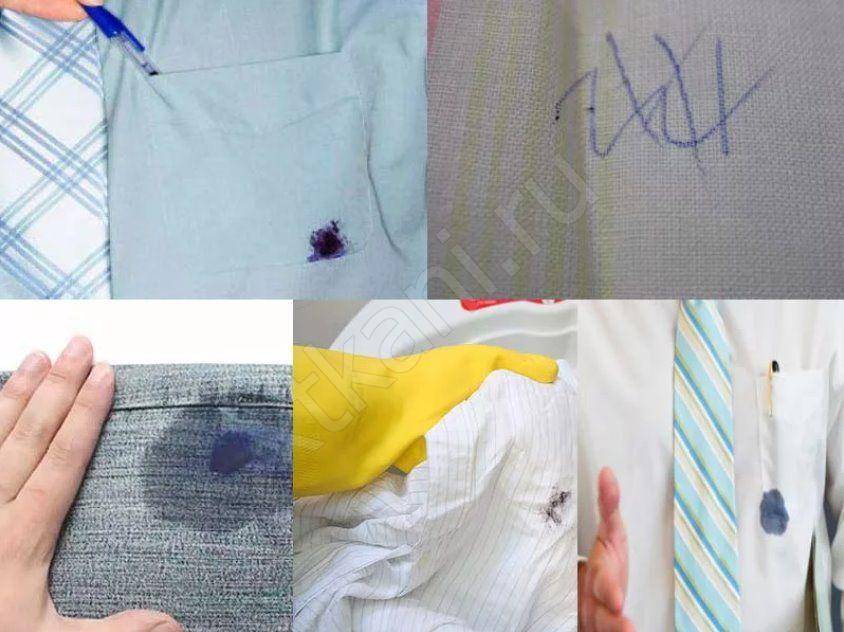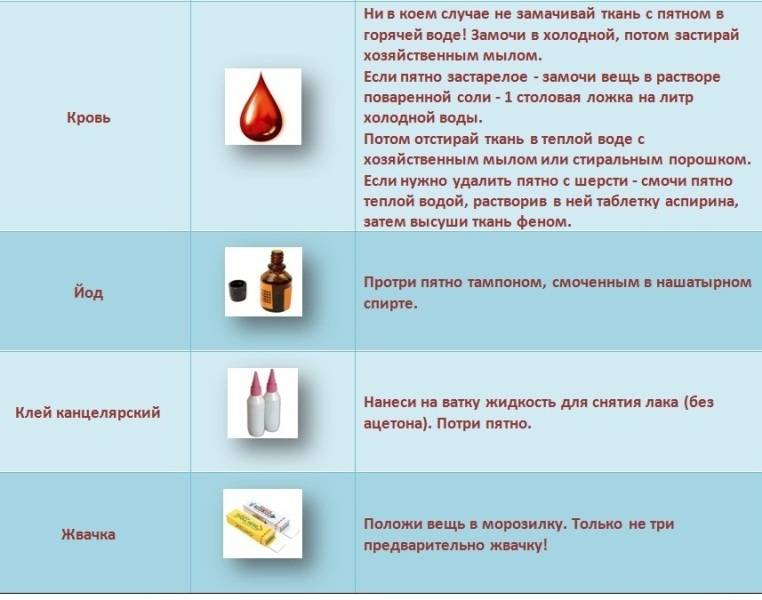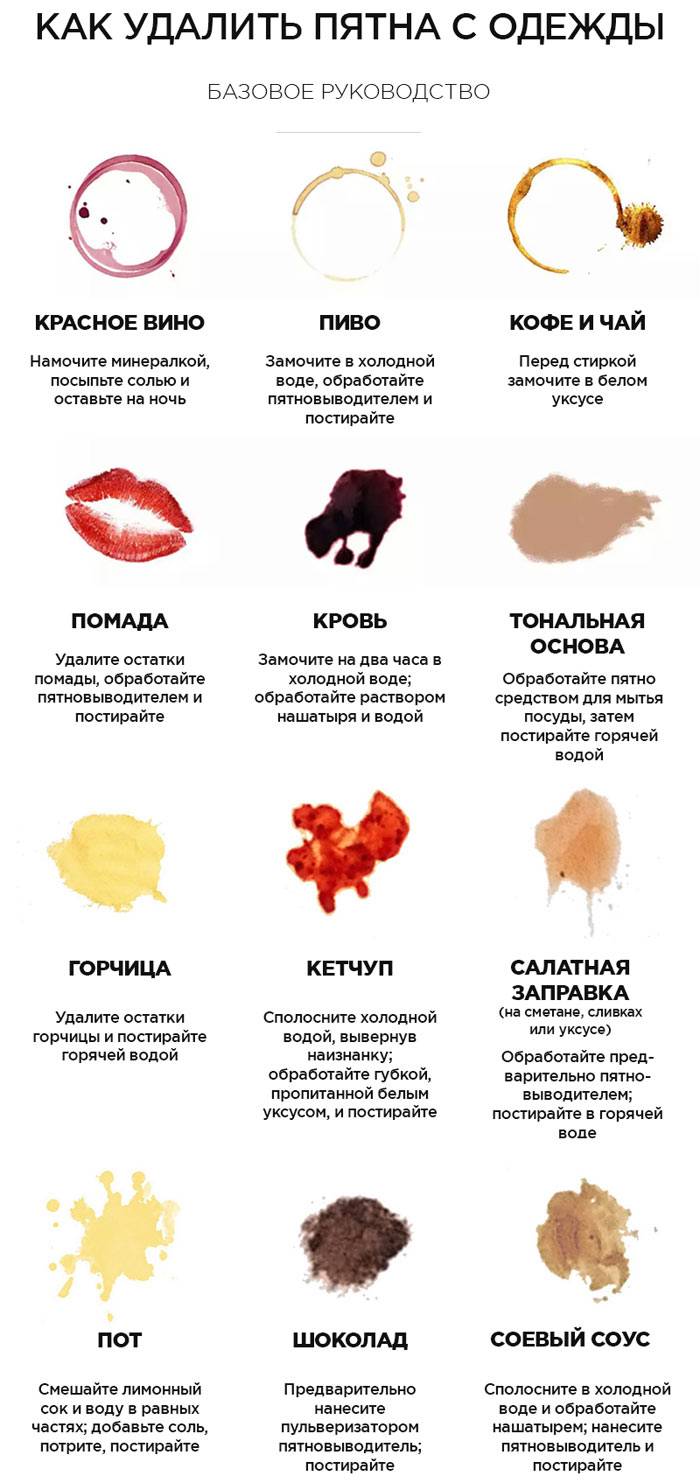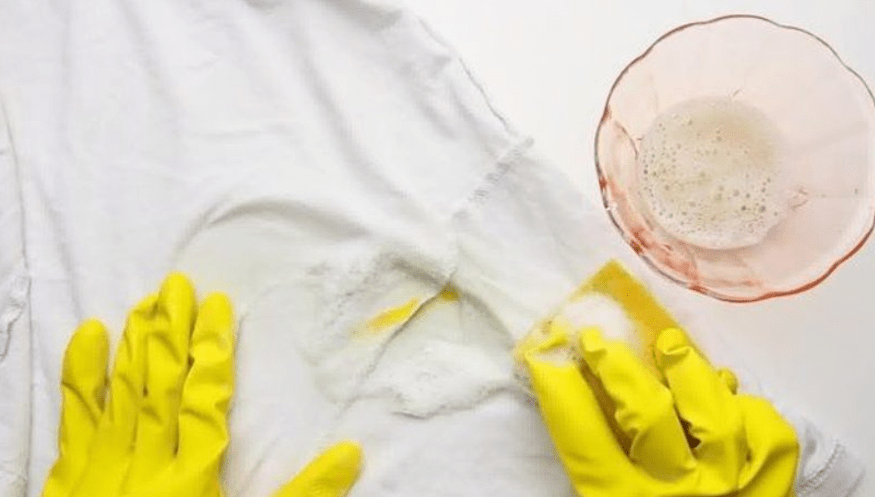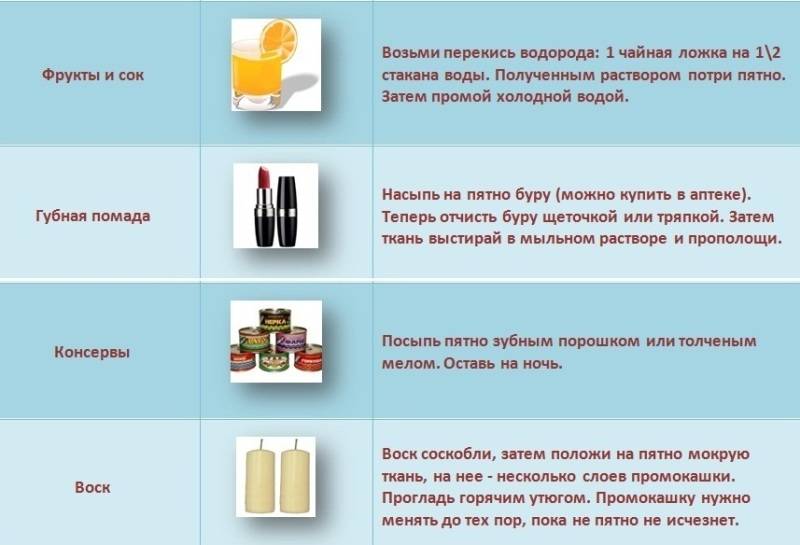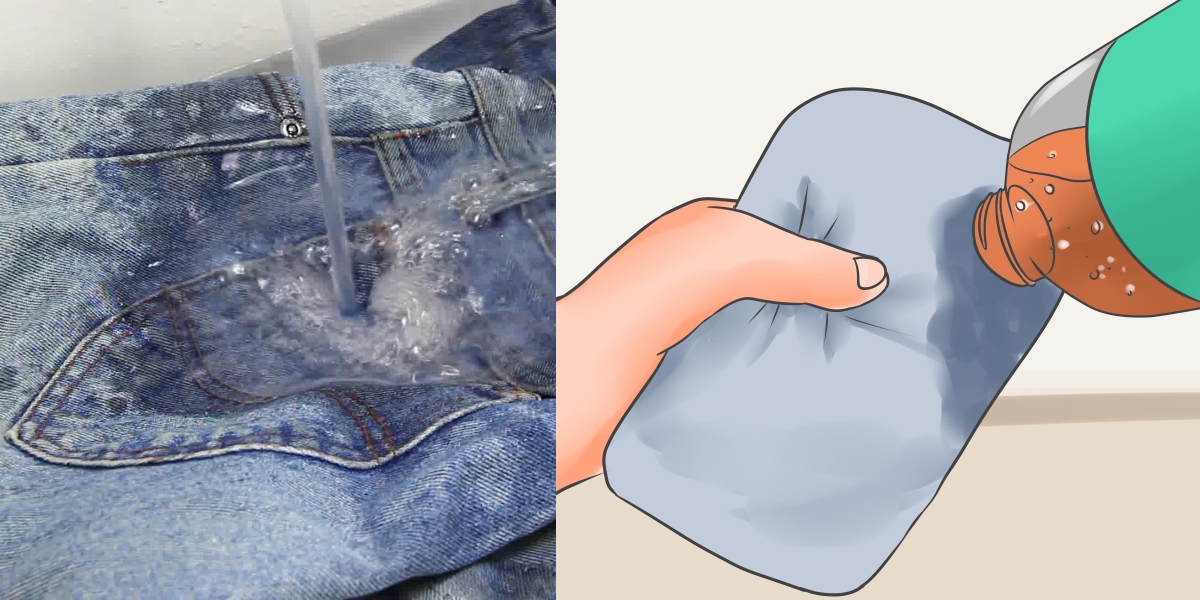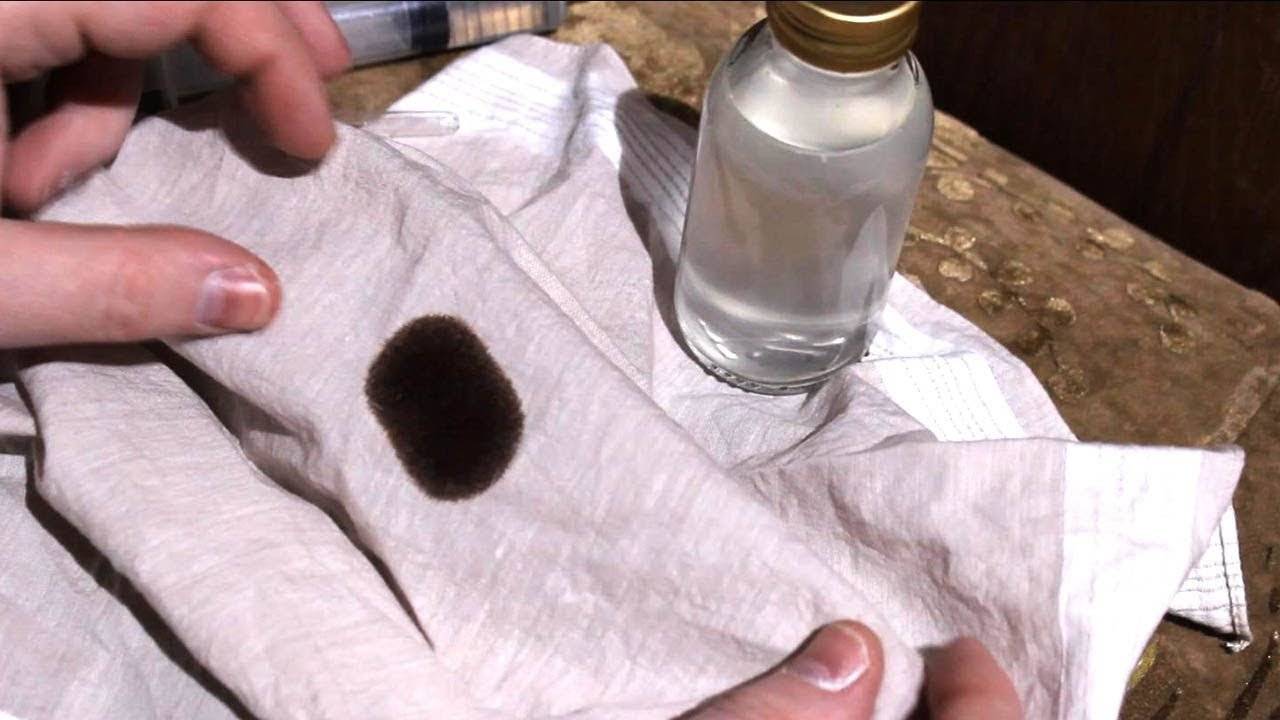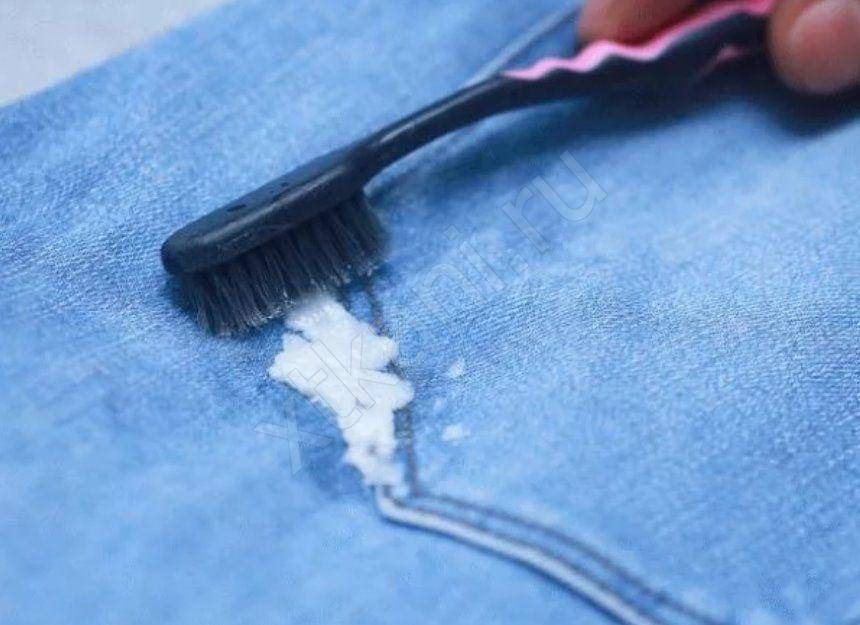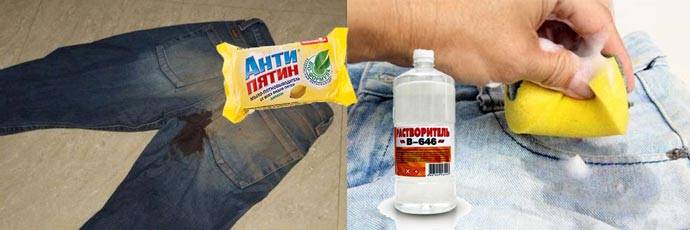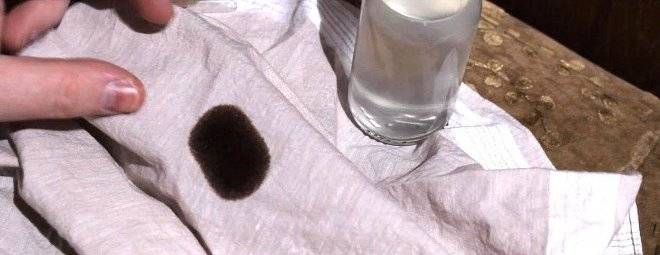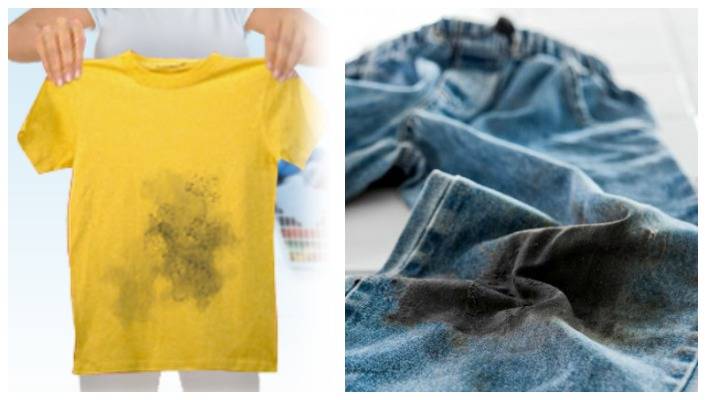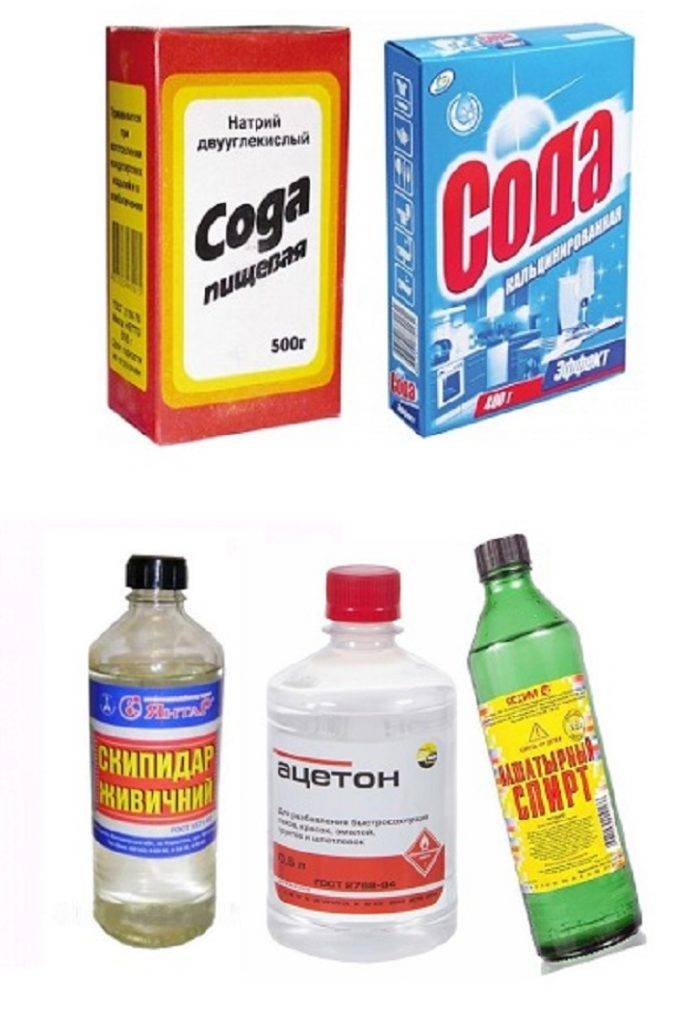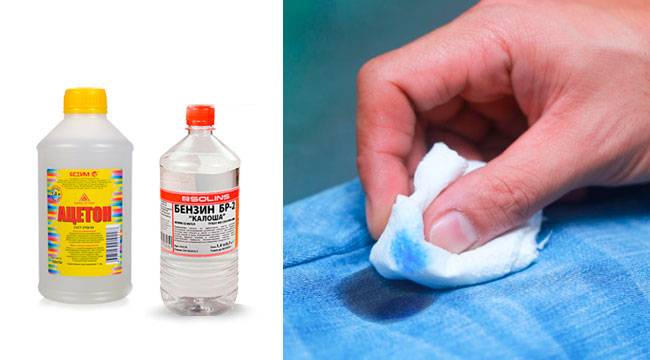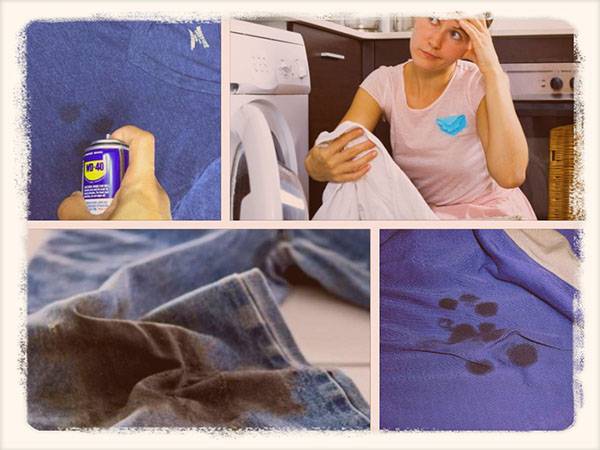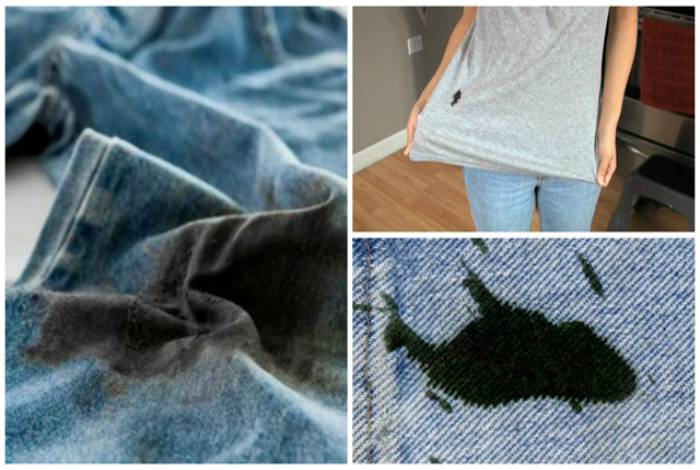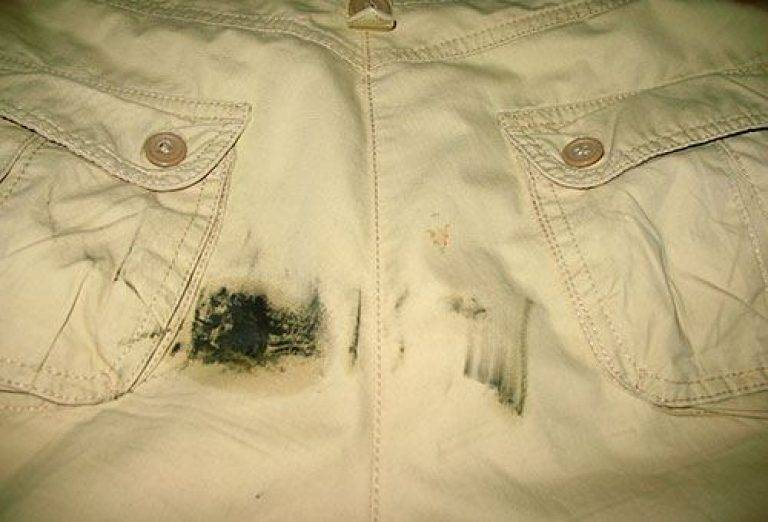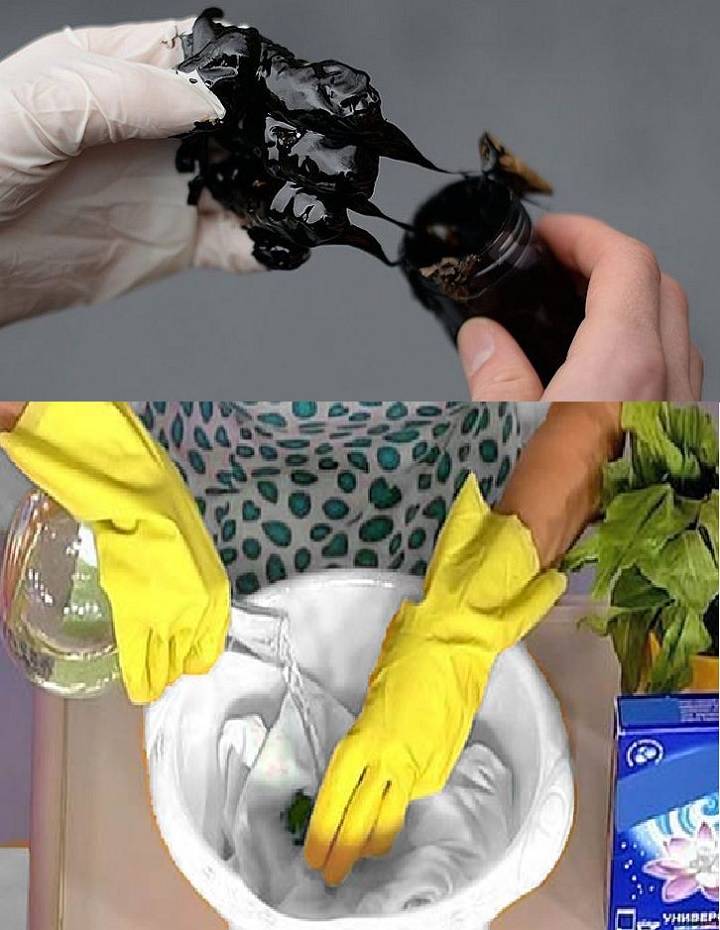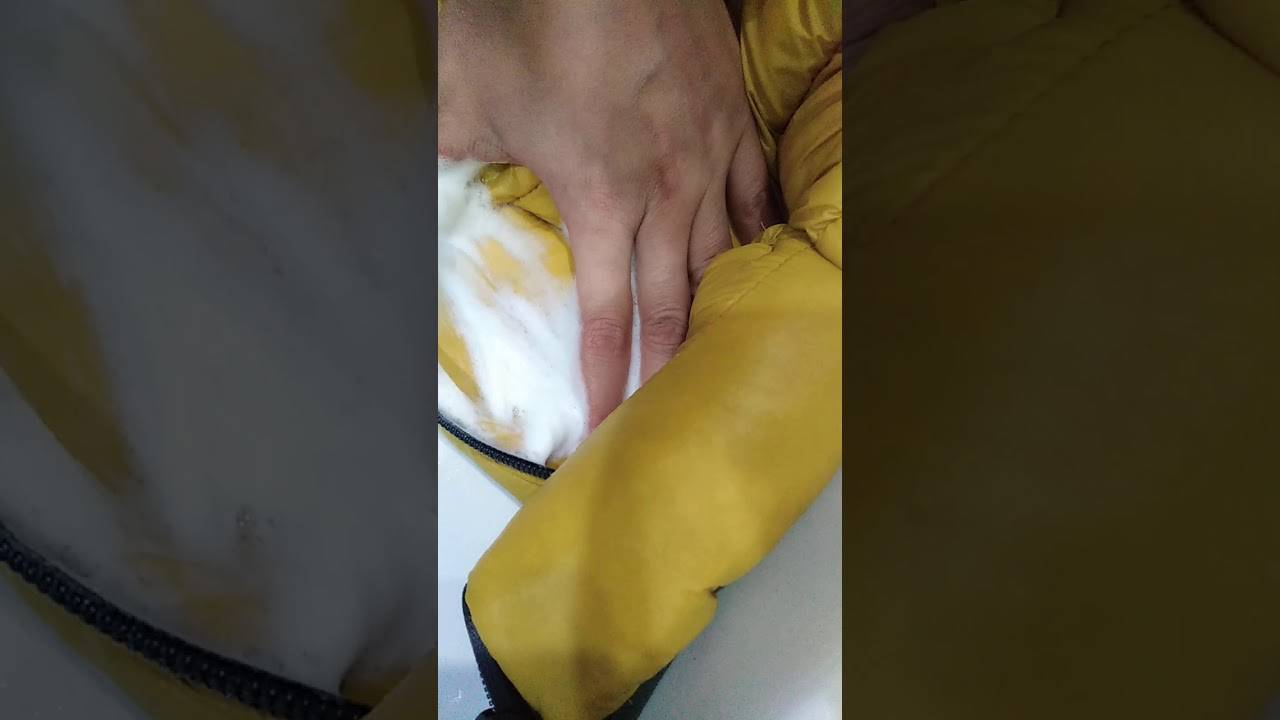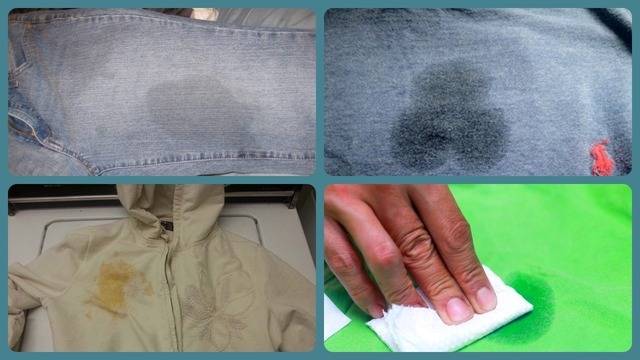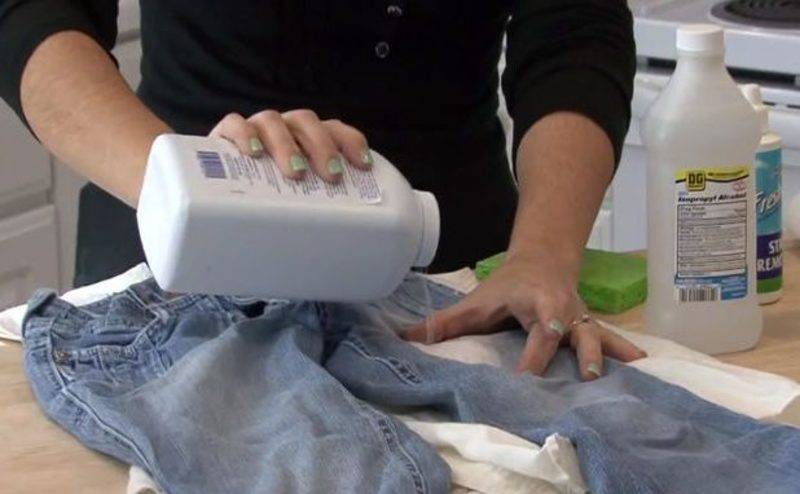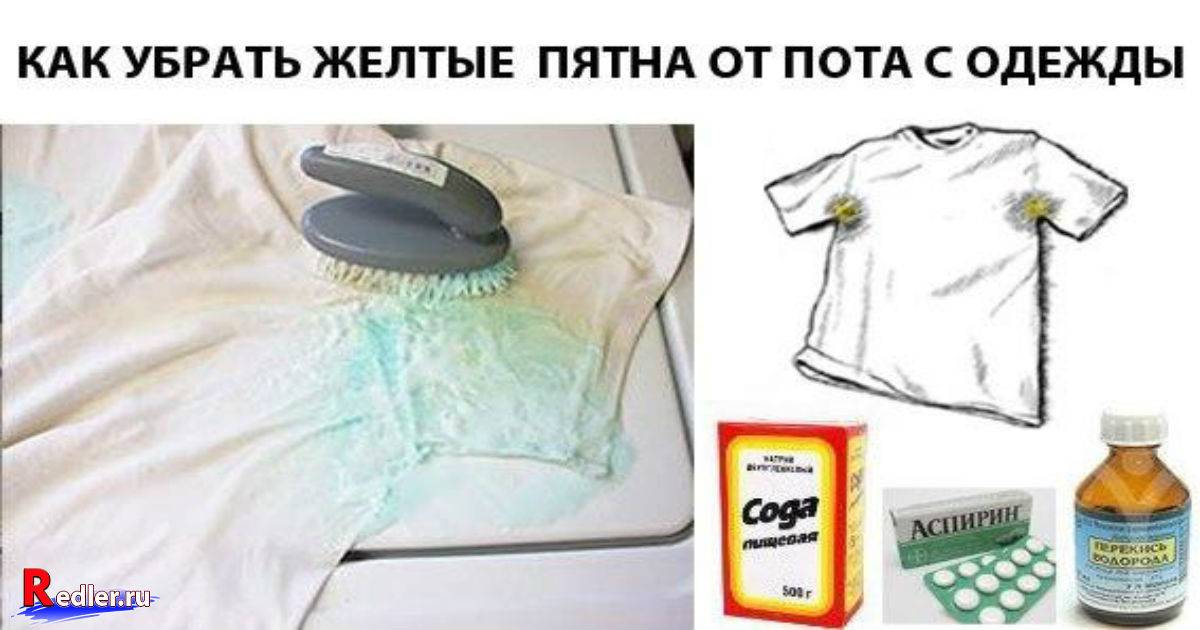Useful Tips
- Fuel oil, in addition to ugly stains, leaves behind a long trail of a specific pungent odor. Therefore, you will also need to remove the fragrance before the main wash in the automatic machine. Soak the treated items for a couple of hours in washing powder with the addition of a stain remover, such as Vanisha.
- In order not to leave contours after removing the stain, be sure to moisten its outer borders with water.
- Do not wash clothes that have been treated with gasoline or other solvents with other items. The fabric quickly absorbs all odors, and you risk contaminating your wardrobe with gasoline amber.
- Dry "reanimated" items in the fresh air.
With incredible efforts, you still managed to remove the traces of fuel oil? Be careful the next time you agree to push a friend's car or repair it in a dress suit!
What about dense products?
The first place in the list of the things most often contaminated with fuel oil is shared by the overalls of car service workers and ordinary jeans. All of them are sewn from durable, dense fabrics that are sufficiently resistant to aggressive effects. How can you wash fuel oil from clothes of this kind? For cleaning overalls, jeans and jackets, you can use stronger products that also deal with old and extensive dirt.
Gasoline (also kerosene, diesel fuel)
A fairly aggressive, but proven method of removing a black oil slick of any age. The only condition is that only pure gasoline sold in hardware stores is suitable for treating contamination. Regular, from a gas station, will be much less effective. Procedure: put a piece of thick fabric or paper folded in several layers under the stain. A cotton swab is moistened abundantly in gasoline and the dirt is gently wiped off, changing the cotton wool as it darkens. Next, the thing is soaked with a washing powder and stain remover, rubbed by hand and rinsed several times in warm water. Finally, they wash in the machine on the "For heavily soiled clothes" mode.

If your clothes are very dirty, you can soak them whole in gasoline for 30-40 minutes. Then process as described above.
Toluene
The most effective and at the same time the most toxic agent. It is extremely rare on sale in its pure form, but it is part of many solvents for paint and varnish. The way of working with toluene is the same as for treating fabric with gasoline.
Car shampoos
Designed specifically to tackle tough pollution. You can buy them at any auto parts and accessories store. The procedure for cleaning clothes with shampoo is similar to most of the procedures described earlier. A little bit of the product is applied to the stain, rubbed in and, after 30 minutes of soaking, washed first by hand and then in a typewriter. As a final step, you can add some stain remover powder if you like.
Acetone
A very strong solvent, which is recommended only in the most extreme cases, for severe and extensive contamination. Apply in the same way as when working with gasoline
It is important to remember that acetone can corrode synthetic fabrics and change the color of others.
Homemade Cleansing Paste
Starch, ammonia, turpentine and white clay together cope with complex traces of fuel oil just as well as gasoline and other aggressive agents. To prepare a cleansing paste, they are mixed in equal proportions, the paste is then applied to the problem area of clothing and left for 1-2 hours.The dried mass is cleaned off with a stiff brush, and then the thing is washed as usual.
Fuel oil and fabric: how the interaction takes place
Fuel oil itself is a residual product of oil refining. It is black in color, quite fluid, very oily consistency and with a pungent, recognizable odor. Getting on clothes, such a stain is absorbed inside rather quickly, but remains slightly damp for a long time. Not only its shape and smell remain on things, but also a feeling of oiliness, very unpleasant to the touch. In addition, there is one more feature. If you do not remove such a nuisance from the surface of your clothes as quickly as possible, then it will not be possible to get rid of it. The liquid so deeply permeates all tissue fibers that it cannot be removed.
Therefore, the first rule: so that not a trace remains of the trace (such is the tautology), it is necessary to start the fight as soon as possible, ideally immediately. And not with water, for she is not an assistant in this matter. But what and how - let's talk about it right now.
Recommendations for fine fabrics: linen or synthetics
If a black oil stain has settled on clothes made of light natural or synthetic fabric, it is dangerous to try to remove it with the first means at hand - the thing can simply be ruined. To avoid this, it is necessary to clean the contaminated area in a gentle way.
Dishwashing detergent (Fairy, AOS, Persil, etc.). Copes well with fresh small stains of fuel oil on any fabric. Its use is quite safe and not very difficult. You just need to apply a couple of drops of the product to the stain, rub thoroughly and soak for 30 minutes in warm water. Then rub the dirty area of clothing with your hands or with a brush and continue soaking for another 10 minutes. Rinse well and wash with the addition of stain remover using your usual machine wash cycle
Stain removers
It is allowed to wash dirty clothes using household stain removers - you just need to carefully select them in accordance with the type of fabric requiring processing (for colored, white, cotton, woolen, synthetic materials). Fuel oil can be washed off white clothes with a small amount of bleaching agents - soaps, powders or gels.
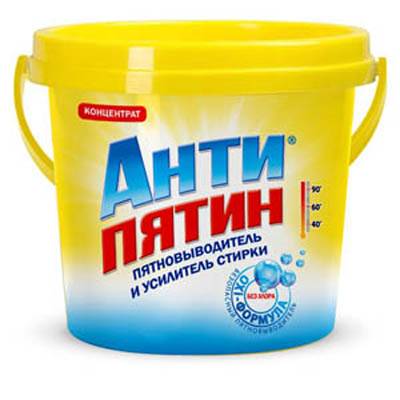
We recommend that you familiarize yourself
Turpentine + ammonia
To process stained clothes, a mixture is prepared from them in a ratio of 1: 1, heated and applied to the stain with a sponge or cloth. Washed by hand in a strong solution of warm soapy water, rinsed and sent for the final wash in an automatic machine.
Fir oil
The most environmentally friendly and safe for health way to remove oil stains, working on clothes made from natural and synthetic fabrics. In addition, after cleaning with oil, an unpleasant chemical smell does not remain, as in most other options for washing fuel oil. Before starting treatment, place a clean cotton pad or a piece of thick cloth under the stain. Further, with a cotton pad dipped in aromatic oil, you need to wipe the stain until it disappears completely, periodically changing the disc as it gets dirty. The item prepared in this way is manually washed with the use of laundry soap and, finally, the usual machine wash is carried out at the maximum temperature allowed for the fabric.
Baking soda + turpentine
An effective way to remove stubborn stains from any fabric. To do this, heat a little turpentine and pour it hot onto the stain. After 30 minutes, without rinsing off the funds, baking soda is poured onto the contaminated area, gently rubbed and washed off, rinsing under running water. As always, finish off with machine wash.
Hot processing
Small fresh drops of fuel oil from clothes can be removed with an iron and absorbent paper (absorbent paper, paper towels, table napkins, toilet paper).A thick layer of paper is placed under the stain, the same is done on the front side
Then, with a hot iron, you need to gently iron the clothes through the paper, changing it as the fuel oil is absorbed. When all the fuel oil is transferred to paper, the remaining trace of it can be treated with fir oil and washed in an automatic machine as usual.
Tar soap
Indispensable if fuel oil has ruined clothes made of delicate and delicate fabrics. You can buy it at most pharmacies. To achieve the desired result, clothes with traces of fuel oil are first soaked in warm water with the addition of any non-aggressive detergent, then washed by hand, rubbing the stain with tar soap. Rinse well and dry. In most cases, no further machine wash is required.
How to remove fuel oil from clothes?
Before you remove fuel oil from your clothes, be sure to know that this pollution is the most difficult. However, there are a number of methods thanks to which you can easily return your things to a clean, original look.
To do this, you need to pay attention to the type of fabric, as well as the characteristics of the stain. Of course, it is easier to get fresh dirt out

You just need to pick up a recipe that would help in this problem:
- solvents;
- caustic soda;
- essential oil;
- ammonia.
Solvents. Sometimes you just don't know how to remove fuel oil from your jeans? A variety of solvents are ideal for cleaning such items, as they are excellent at breaking down the resin. However, in this case, you should adhere to some rules:
- Be sure to wear rubber gloves on your hands.
- Soak a piece of cotton wool or gauze in a solvent, and then wipe the oil stain well.
- If the dirt cannot be removed immediately, then the dirty thing should be soaked for about one hour.
- Rinse well, wash by hand with powder or laundry soap, and then in a typewriter.
When the thing is too dirty, then it is necessary to soak it in gasoline or other means for half an hour.
The main thing is to always remember that this method is not suitable for delicate materials. It is best used for cleaning jeans and workwear. Because all this can lead to discoloration of the fabric.
Caustic soda. When working with caustic soda, which is considered a highly toxic substance, it is imperative to use protective equipment to prevent it from getting on the skin. This soda very effectively destroys fuel oil, thereby quickly cleaning the fabric. However, it should not be used to clean cotton and wool items:
- Pour baking soda on a stain of fuel oil and rinse well after half an hour, and then wash in a typewriter;
- Stir a tablespoon of baking soda in two glasses of plain water. Soak fabric for 2 hours. And then wash in the washing machine.
Watch a video on how to remove fuel oil stains on clothes at home.
Essential oil. One of the reliable ways to clean any things from oil stains is called the use of essential oil, especially if it is pine, fir or eucalyptus. In addition, they have a wonderful aroma:
- moisten a piece of cotton wool in essential oil and put under a dirty stain;
- with another piece, also dipped in oil, gently rub the fuel oil until it is completely removed, trying to change the cotton wool as often as possible, as it gets dirty;
- wash in a washing machine.
However, very old and large stains may not be handled. If it is not possible to remove the contamination, then you can apply turpentine. In this case, the stain must be moistened with oil, and after 5 minutes, wipe off the fuel oil with cotton wool, which must be soaked in turpentine beforehand. All manipulations must be carried out only with gloves.
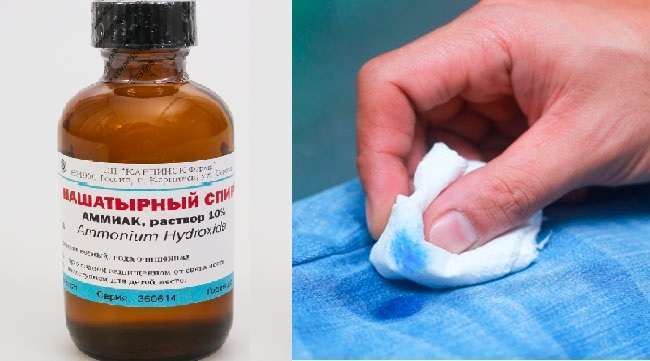
Ammonia
If you pay attention to how to remove fuel oil from clothes at home, then you should definitely highlight the fact that there are a couple of wonderful recipes that contain ammonia:
- treat the oil stain with alcohol.Then leave for half an hour, rinse thoroughly, and then wash;
- mix turpentine and ammonia 1 to 1. Then wet the sponge in the resulting liquid and rub the stain well. Wash in soapy water by hand or using a washing machine;
- combine in equal amounts ammonia, starch and white clay. Apply the resulting paste to the stain and after it dries, after about 3-4 hours, clean everything with a brush. Wash.
There are also several more methods than to clean fuel oil from a cloth:
- Heat some turpentine. And then pour it onto the oil stain. After half an hour, sprinkle the fabric with baking soda. Rub gently with a brush and then wash.
- Rub fresh dirt with soap, preferably household or tar soap, soak for half an hour and wash.
Rubbing stains from dense fabrics
To things made of dense fabric, cleaned of fuel oil, most often work suits and denim. Removing stains from this type of clothing is easier: these fabrics are not so delicate, so you can use aggressive products without the risk of ruining the thing.
Gasoline, kerosene, diesel fuel
Aggressive and toxic, but works great. When choosing gasoline, you should give preference to a pure product from the store, rather than a refueling agent.
The method of application is similar to using oil:
- Place cloth, cardboard, or heavy paper under your clothing.
- Soak a piece of cotton wool in the product and wipe the stain.
- Soak the item, then wash it by hand and send it to the washing machine.
The same method of application works for toluene: this product is more difficult to buy, but it cleans things more effectively.
We remove engine oil and fuel oil from clothes - video:
Butter
The oil is applied on stubborn and dried spots to soften them and wipe them off afterwards. The method of use is as follows:
- Take the oil out of the refrigerator, keep it at room temperature for 5-10 minutes.
- Cut a small piece and place on the stain.
- Leave for 3-4 hours, then remove and treat with any cleanser.
In addition to butter, a mixture of glycerin and 72% laundry soap can be used for the same purposes.
Car shampoos
Car cleaning shampoos are aggressive and potent products found in auto parts dealerships. It is used as follows:
- Soften the stain with oil if necessary.
- Apply shampoo to the affected area.
- Rub in, leave for half an hour.

After the expiration date, the item must be washed: first on the hands, to eliminate the odor, and then, in the washing machine. To improve the effect, you can use a stain remover.
Clay paste
You can wipe off a stain of fuel oil at home if you prepare a clay paste. It requires 50 ml of turpentine, 50 ml of ammonia, 50 g of white clay and 45 g of starch.
- Mix the ingredients in equal proportions.
- Apply to clothing, leave for 2-3 hours.
- Remove the mixture with a brush.
This method can damage the fabric if the brush is too hard. Prefer softer bristles, and then send the item to the wash on the "heavily soiled" mode.
Folk methods of dealing with oil stains
So how can you remove fuel oil stains at home?

Dishwashing gel
Apply the product to the stain in a thick layer and let it work for 1-1.5 hours. Next, wash the item in the washing machine.
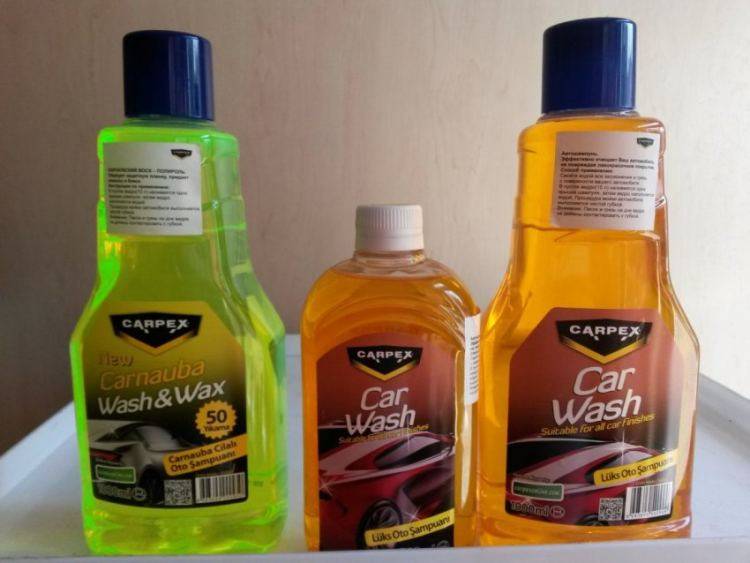
Fat-soluble products
Fat-soluble products - gasoline, white spirit, turpentine, etc.
Care and safety measures must be taken when using aggressive solvents to tackle stubborn stains.
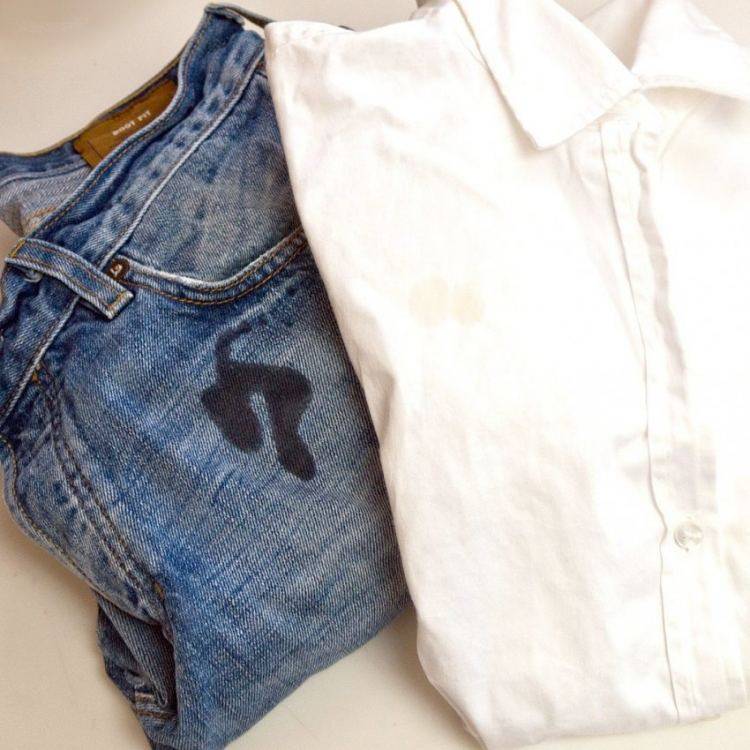
It is better to apply products from the wrong side to minimize damage to the color of the material.
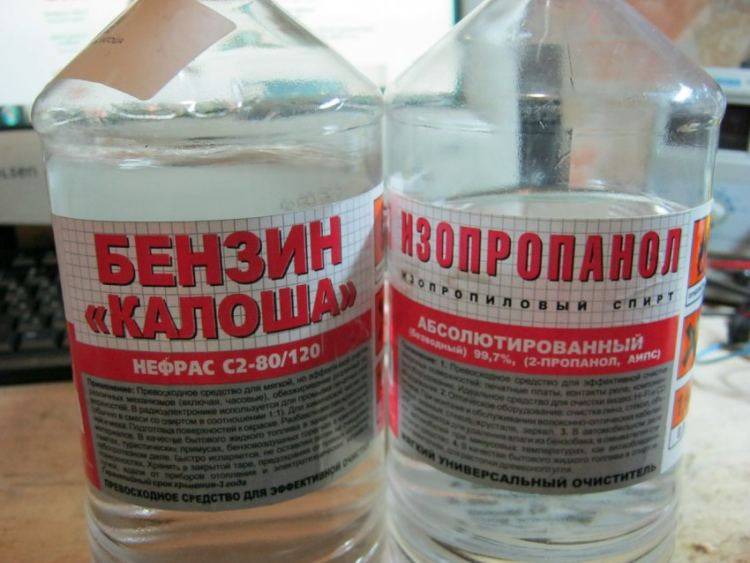
To remove oil stains from jeans, soak a cotton swab with solvent and apply to the stain for 20-30 minutes. Then wash the garment in warm water and soap.
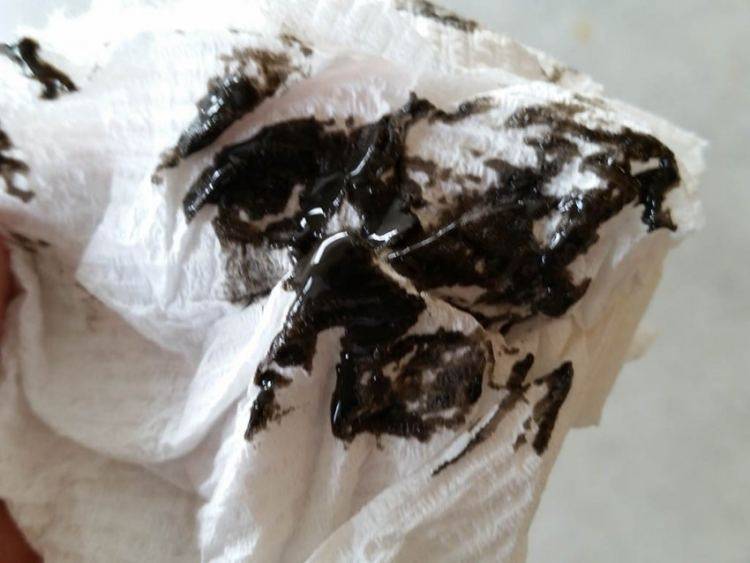
Fir or eucalyptus oil is ideal, but other oils can be used as well.
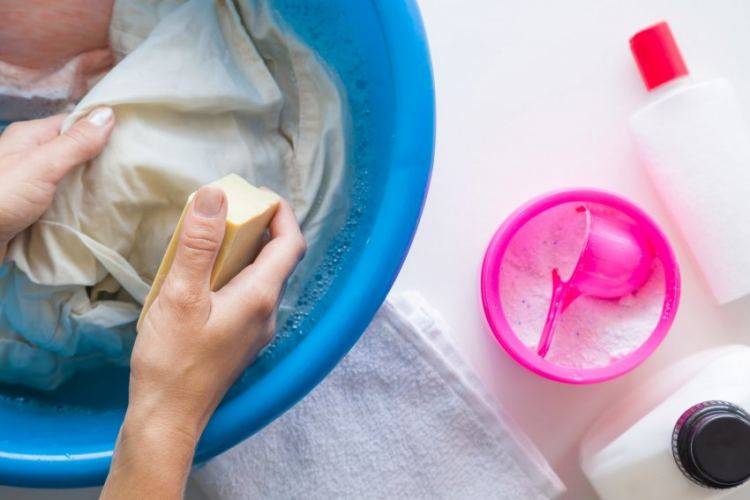

Ammonia
There are several proven ways to remove oil stains using ammonia:
- Apply ammonia to the stain and machine wash after an hour.
- Mix ammonia with turpentine and apply to the stain. After 1-1.5 hours, wash as usual.
- Combine ammonia, blue pharmacy clay, and potato starch. Apply the resulting gruel to the stain with a thick layer and wait until it dries completely. Then rinse with clean water.

Automotive cosmetics
Car cosmetics, in particular car wash shampoo. This product is very gentle on the fabric without changing its appearance and copes well with such stains.
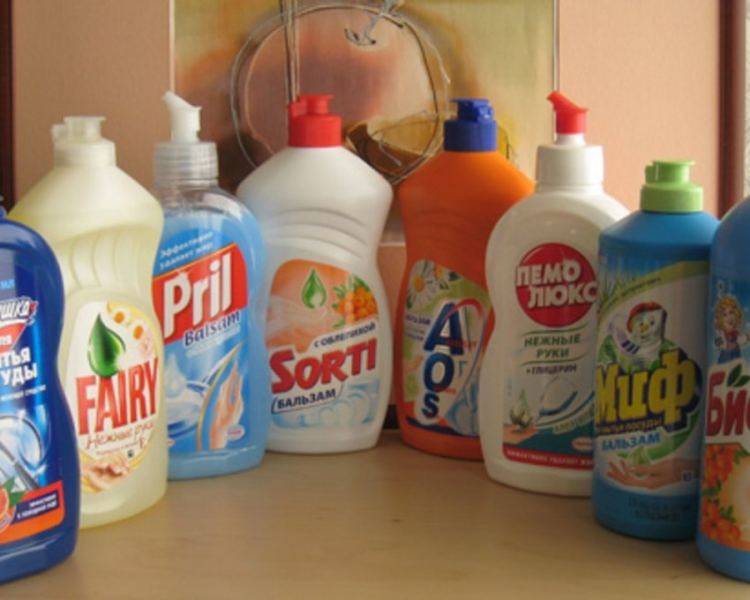
To clean oil stains, soak clothes with car shampoo and leave for several hours. Then rub the area with your hands and rinse in warm water.
Bleach
You can also use bleach and stain removers to remove fuel oil stains on your jacket. When using this method, you must strictly follow the recommendations in the instructions for the drug and on the product label.
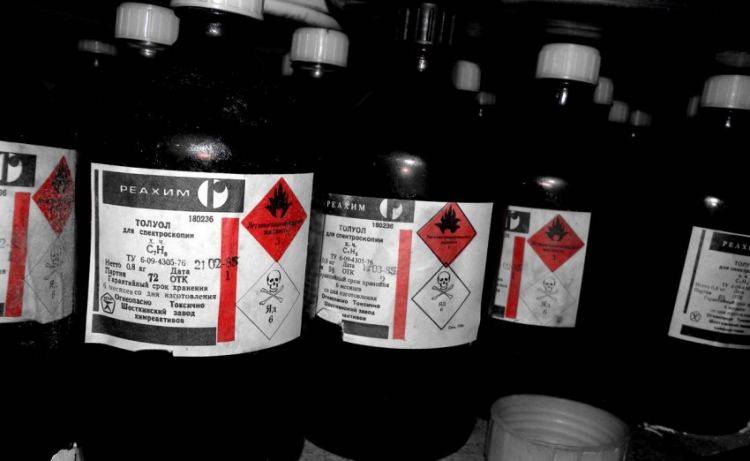
Tar soap
With the help of tar soap, you can get rid of a small fresh oil stain. Grate the soap, dissolve in warm water and soak the product in it. Then rinse with water.
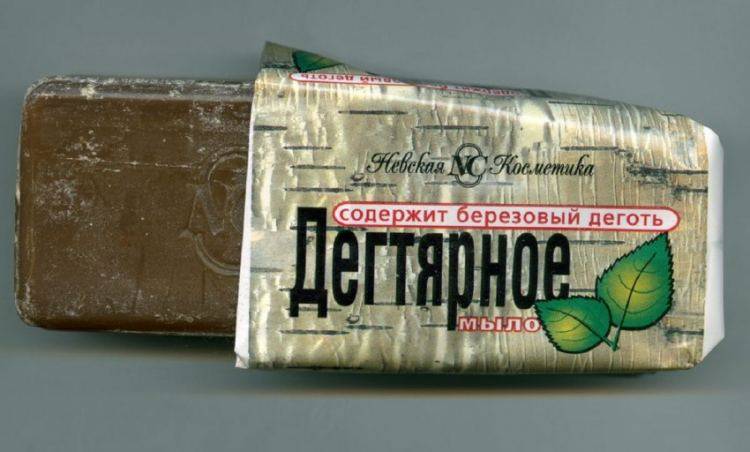
Butter
Butter can also help fight oil stains, especially when essential oils are not on hand. Apply oil to stain, leave to act and wash off with laundry soap.
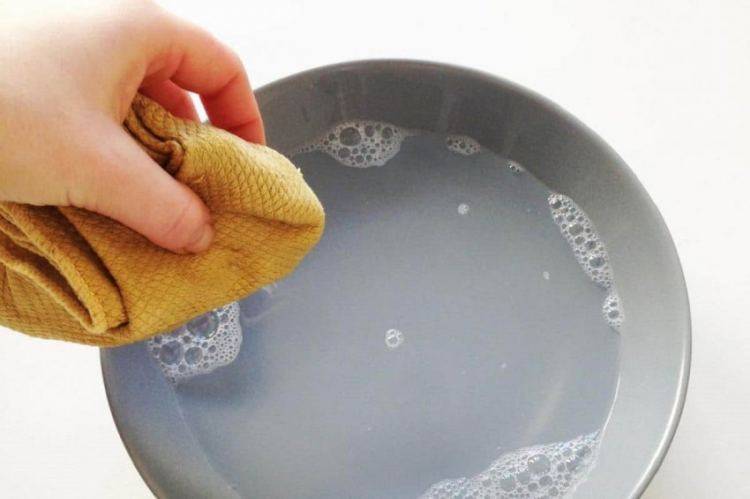
Removing stains with an iron

As it gets dirty, the paper needs to be replaced with clean paper. Continue manipulating until the spot disappears completely.
After examining the materials in this article, you know exactly how you can remove a black oil stain. The most important thing is to start removing immediately after you notice the pollution, and then the chances of a complete victory will increase significantly.
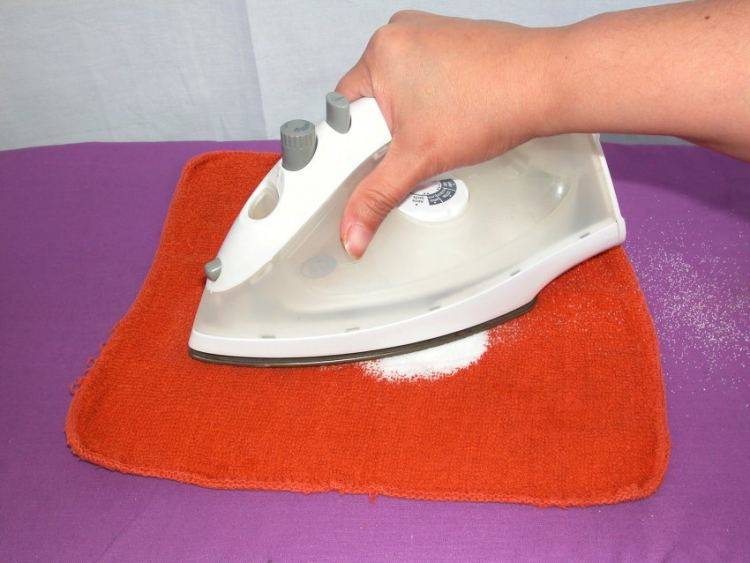
How to wash your hands of fuel oil
Fuel oil, when it comes into contact with hands, eats into the skin so hard that it is very difficult to wash it off. Most often, the question of how to wash your hands of fuel oil arises before people who work in the technical field, are engaged in the repair and maintenance of equipment and cars. But no one is immune from such a nuisance.

There are products that are guaranteed to clean your hands of fuel oil. These are gasoline and various solvents, the content of refined products. But these substances act aggressively on the skin of the hands. With prolonged use, they are absorbed, penetrate into the bloodstream and harm human health.
You can take a small piece of cotton wool moistened with liquid and rub the stain of fuel oil with it. After that, hands must be thoroughly washed with warm water and soap, wiped and generously lubricated with an emollient, or even better, a nourishing cream.
Fairy, already mentioned, is a less aggressive way of cleaning hands from fuel oil. You need to moisten your hands with them and rub for one or two minutes. Then rinse with warm water. Lubricating your hands with cream in this case also does not hurt.
Ordinary washing powder is also used to remove stubborn dirt from your hands, but it can irritate the skin. Therefore, it is recommended to use this method only as a last resort.
The least harmful method of cleansing your hands from fuel oil is the use of vegetable oil. They are generously lubricated with hands and allowed to be absorbed for 5-10 minutes. After this procedure, hands are washed with toilet or laundry soap. The most contaminated areas of the skin should be rubbed with a pumice stone.
Fuel oil will easily come off the skin if you lubricate your hands with a moisturizing or nourishing cream before work. Take care of your health, use as little harmful toxic agents as possible.
Removing fresh and old oil stain
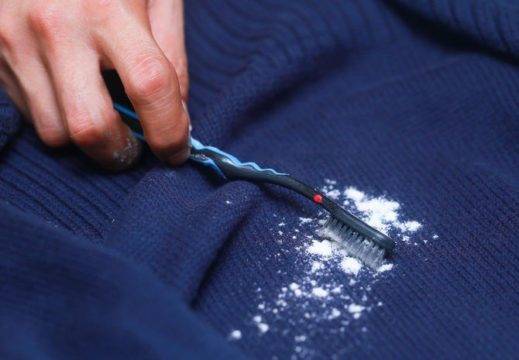
It is not difficult to wipe fresh fuel oil from a jacket or T-shirt, if you start cleaning immediately, without tightening it. As soon as you spot a heavy oil residue on your clothing, wash the area immediately with warm water and baking soda.The baking soda will remove the blackness and absorb the oily texture. To remove the dirt completely, wash clothes twice with laundry soap or regular washing powder. Then rinse the product well in cool water and dry it, there will be no trace of dirt.
Regular margarine will help to quickly remove a small speck. It should be slightly frozen, then it will be easier to use it. Take a small piece of margarine, rub it on the soiled area, and then let it sit for 10-15 minutes. When a little time has passed, wash your clothes in the way you are accustomed to. Vegetable oil or olive oil is suitable instead of margarine.
If a petroleum product appeared on clothes for a long time, then it has already managed to firmly eat into the fabric fibers, however, you can still get rid of it. Conventional products such as soap will not work; a more effective method is needed. Old oil pollution can be removed well with light solvents and gasoline. Apply a little gasoline to a dry cloth and remove dirt from the cloth surface. You do not need to rub in gasoline, just rub it over the fabric several times with light movements. In case of stubborn dirt, take a clean cloth and repeat cleaning.
Sometimes oil stains are not removed from the fabric for years, mistakenly believing that it is impossible to remove them. Everything is easy to fix: pour a little gasoline on the dirty surface and leave it to soak into the fabric structure for 20-30 minutes, you can hold it longer for efficiency. Some of the gasoline will evaporate, and remove the rest with soapy water. Then wash the product in the usual mode in a typewriter twice. If the stain has not completely disappeared, repeat the method, increasing the holding time by half an hour.
Attention!
Organic solvents are used with caution for cleaning colored items and synthetic material. Substances damage the tissue structure and remove part of the color with contamination
Features of fuel oil removal
Regular washing will not cope with such tough dirt. It will not allow you to remove its alcohol and ether (asphaltenes and petroleum resins are resistant to these components).
Several indicators affect the rate of elimination:
- Duration of pollution (it is much easier to deal with a fresh stain);
- Dimensions;
- Type of fabric.
In any case, when choosing a cleaning agent, you need to pay attention to compounds that can break down and neutralize oils and resins. To effectively remove complex dirt and preserve tissue and skin of hands, you should remember a few important tips:
To effectively remove complex dirt and preserve tissue and skin of hands, there are several important tips to remember:
- First, things are treated with a cleaning compound, then rinsed thoroughly in water, washed by hand and only then subjected to a machine wash.
- Depending on the size of the dirt, the cleaning composition is applied only to a piece of cloth or the clothes are completely soaked in the active liquid.
- When working with aggressive substances, rubber gloves and a respirator should be used.
- The product is applied from the edges of the stain to the center. This prevents the stain from spreading over the fabric and preventing the stain from growing.
- Before applying the composition, it is worth testing it on a small piece of cloth.
- Use harsh chemicals only in a well-ventilated area.
- When applying the cleaning agent to the stain, it is advisable to put a clean cloth underneath it, folded several times. This will prevent the stain from being printed on the opposite side of the garment.
How to remove fuel oil stains: popular methods
If you are going to remove a black oil stain on clothes, you need to know that this type of pollution is considered one of the most difficult. But there are a number of ways to return things to their original appearance.
When choosing a cleaning method, you should be guided by the type of fabric and the characteristics of the stain (age, scale).In any case, it is easier to deal with fresh dirt, which means that you should not delay washing. All recipes for removing stains from fuel oil are based on substances that have the ability to disaggregate (break down) resins and oils.
Dish detergent
To remove heavy fuel oil stains on delicate fabrics (synthetics or thin natural materials), it is advisable to use a gentle preparation such as liquid for washing cutlery (AOS, Fairy).
Stages:
- Rub the concentrated product into the stain and leave the item in warm water for 30 minutes.
- Wipe off the dirt or brush it off and soak for another 10 minutes.
- Rinse the item of clothing in water to remove residual fuel oil.
- Wash with powder by hand or machine in a suitable mode.
If the stain is old, apply butter for a few hours before cleaning. Then carry out the processing according to the described scheme.
Flammable substances and solvents
Refined gasoline, kerosene, diesel fuel or toluene are suitable for processing rough material. All of these substances are light hydrocarbons that break down resins and will help quickly remove stains on jeans. Toluene itself is almost not sold, but it is included in the composition of solvents for paints and varnishes.
Stages:
- Wear rubber gloves.
- Soak a cotton pad (piece of gauze) in a combustible substance and rub the stain.
- Leave the garment for 60 minutes if the contamination is not immediately removed.
- Rinse the product, wash with powder or laundry soap by hand and then in the machine.
Similarly, you can use acetone for stains. If the item is very dirty, soak it completely in gasoline or another substance for 30-60 minutes.
Essential oils
A safe way to clean oil from things is to use essential oils. Extracts from eucalyptus, fir and pine are most suitable for these purposes. They can be safely applied to synthetic and delicate natural materials
An important advantage of oils over flammable substances is a pleasant aroma. But they may not wash old and large-scale pollution
Stages:
Soak a cotton ball in oil and place it under the soiled cloth.
With a second disc soaked in oil, gently wipe the stain until completely removed. Change cotton wool as it gets dirty.
Wash the item in the washing machine .. If the dirt cannot be removed, you can use turpentine
First, the stain must be abundantly moistened with oil, and after 5 minutes, wipe the fuel oil with cotton wool soaked in turpentine. It is recommended to carry out manipulations with gloves.
If the contamination cannot be removed, you can use turpentine. First, the stain must be abundantly moistened with oil, and after 5 minutes, wipe the fuel oil with cotton wool soaked in turpentine. It is recommended to carry out manipulations with gloves.
Ammonia
Speaking about what else can be used to wash fuel oil, it should be noted that there are several effective and relatively non-aggressive recipes based on ammonia:
- Moisten the stain with alcohol, leave for 30 minutes, rinse and wash.
- Combine alcohol and turpentine in equal parts. Soak a sponge in the liquid and wipe the stain. Wash by hand in soapy water, then in a typewriter.
- Mix equal amounts of clay (white), starch and ammonia. Apply the paste to the stain. After it dries (after 2-3 hours), brush the dirt off with a brush. Wash a thing.
Caustic soda
Unlike baking soda, caustic soda is highly toxic. When working with it, you should use protective equipment and do not allow it to get on the skin and epithelial membranes.
Caustic soda effectively dissolves fuel oil stains, providing cleaning of the fabric. But cotton and wool cannot be processed with it.
Options for using caustic soda (they can be combined):
- Put the thing in the basin. Sprinkle baking soda on the stain. After 20 minutes, rinse and wash in the washing machine.
- Dilute baking soda in water (1 tablespoon of the substance for 2 cups of liquid). Soak clothes for 2 hours. Machine wash.
List of effective remedies
It should be noted that fuel oil is a difficult to remove agent, as it is the remainder of oil refining. After gasoline and kerosene have been distilled from oil, the most corrosive components remain. Therefore, if the stain is planted, you need not hesitate and try to quickly get rid of it. Experts identify a list of products that will help get rid of contamination.
For fresh stains
Professionals recommend several effective options for how to remove fresh fuel oil stains from clothes:
- Essential oils - fir or eucalyptus. Apply a few drops of the product and let it mix with the dirt. Next, you need to wipe the dirt with a cotton pad, previously moistened with a solvent. You need to continue the process until the fuel oil is cleaned. The final step is washing things in a typewriter.
- Caustic soda. Apply a small amount of product to the stain, let it absorb. If this method does not help, you can soak the item directly in the soda solution and leave to “soak” for 1-2 hours. After that, it is necessary to wash and rinse the clothes well.
- Laundry soap. A simple and effective tool that will help you wash fuel oil at home. First, you need to lather only the dirty area and leave for 20-30 minutes, then rub it well. Next, wash the item completely with soap. You can complete the machine wash if necessary.
- Tar soap. Another effective cleansing product. The principle of its use is similar to that of laundry soap. But it should be borne in mind that tar soap has a rather specific smell, therefore, upon completion, the clothes will need to be soaked in concentrated powder or conditioner, and then dried on the balcony.
- Detergents or bleaches (for example, "Fairy" or "Vanish"). Soak the item with a freshly planted spot in a concentrated solution for 2-3 hours, then rinse well.
- You can remove small fresh stains of fuel oil with an iron. You will need plain paper that absorbs grease well. It should be placed on both sides of the fabric. Next, iron the paper with a heated iron, where the dirt should be absorbed.
For old stains
What to do and how to remove an old stain of fuel oil on clothes, when it is already firmly embedded in the fabric.

Cleansing with the previous methods is unlikely to be effective. Therefore, experts have identified a list of options that are effective in such cases:
- Petrol. It is necessary to carry out the cleaning process in a well-ventilated area, where there is no open fire nearby. With a cotton swab dipped in gasoline or diesel fuel, you need to easily wipe the contamination until it disappears completely. If it is too old or occupies a large area, it is better to completely soak the item. Experts do not advise using this method on synthetic clothing, as it can be severely damaged. And, of course, do not forget about rubber gloves for work.
- Car shampoo. The product can be purchased at any auto shop. It should be used by analogy with gasoline. The main thing is to wash and rinse the thing well after removing the fuel oil to remove the smell of special equipment.
- Alcohol will also help clean fuel oil from clothes (you can choose both ammonia and ethyl). You need to apply a little product on the stain and let it soak into the fabric (15-20 minutes), then wash the thing. If the desired result is not achieved the first time, the process should be repeated.
- Acetone. A strong product that is not suitable for delicate fabrics. Moisten a cotton pad in the product and wipe the dirt with it until it is completely removed.
Using a stain remover
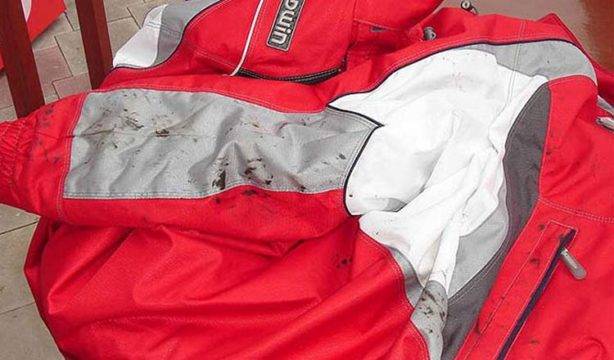
Chemicals help to bring things back to cleanliness, as they destroy the structure of the compound and pull it out of the fabric fibers. The most popular remedy among housewives is the Vanish stain remover.It can be added both during the wash itself and before it, it depends on the degree of soiling. The procedure is as follows:
- on a dry item, apply a little stain remover to the dirty area;
- leave the stain remover on the fabric for at least 10 minutes;
- wash the item in powder with the addition of "Vanish" in a typewriter.
Vanish copes with the removal of fresh small contaminants without difficulty. In addition to "Vanish", housewives remove oil products from textiles with tar or laundry soap. For light and crisp white fabrics, try bleach. First dilute a low concentration solution (no more than 100 ml of bleach for 5 liters) and soak the product in it for 20-30 minutes. If the stain remains, increase the concentration and increase the time.
Attention!
With prolonged bleaching, the fabric loses its white color and becomes a yellow tint.

